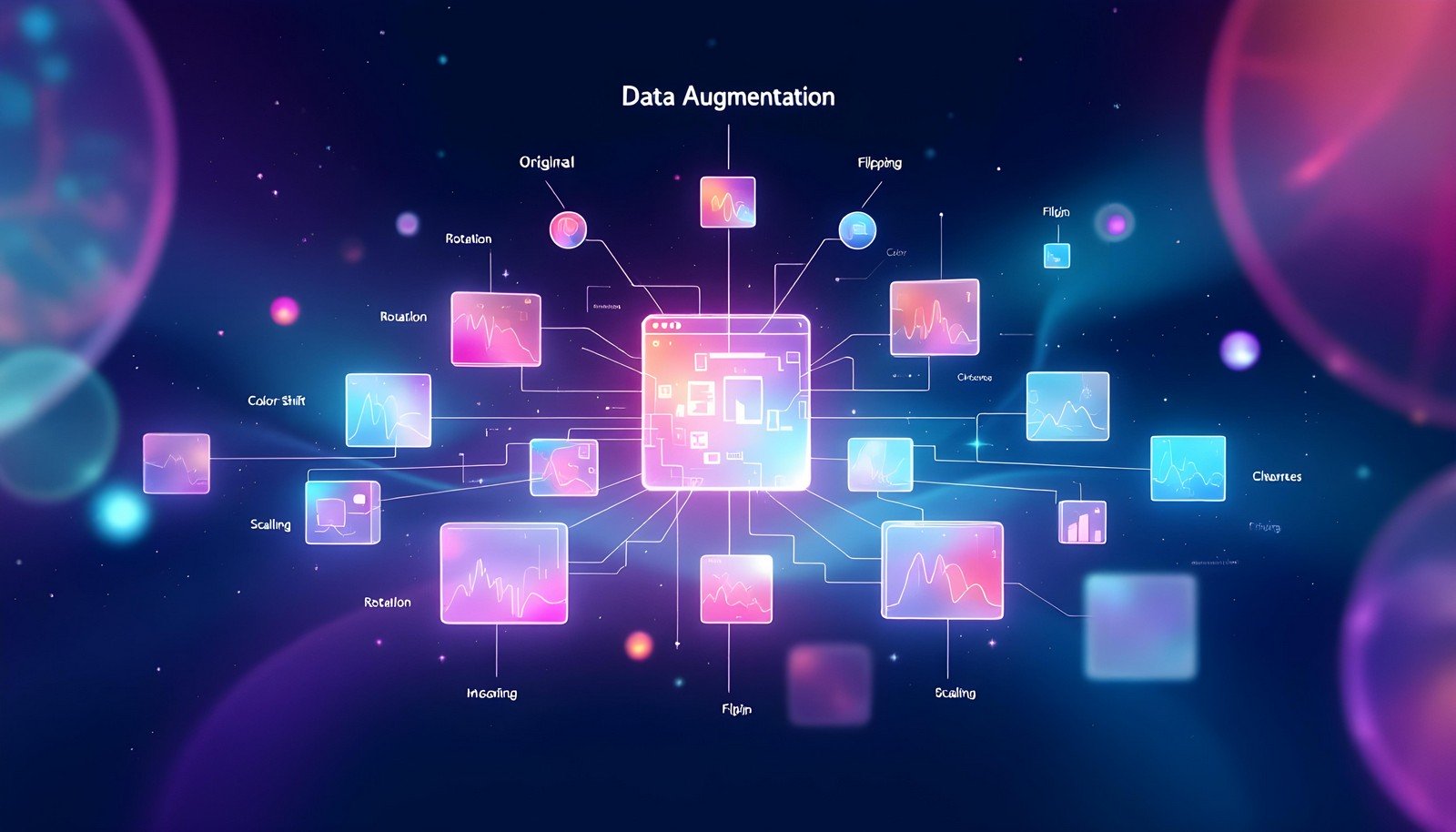Data Augmentation

Quick Navigation:
- Data Augmentation Definition
- Data Augmentation Explained Easy
- Data Augmentation Origin
- Data Augmentation Etymology
- Data Augmentation Usage Trends
- Data Augmentation Usage
- Data Augmentation Examples in Context
- Data Augmentation FAQ
- Data Augmentation Related Words
Data Augmentation Definition
Data Augmentation is a technique used in machine learning and artificial intelligence to increase the diversity of data available for training models without actually collecting new data. This is done by applying various transformations to existing data—like flipping, rotating, scaling, or adding noise to images—allowing models to learn from more examples. These transformations help prevent overfitting, improve model accuracy, and make models more robust by exposing them to a wider variety of data during training.
Data Augmentation Explained Easy
Imagine you’re learning to recognize animals in photos, but you only have a few pictures. To practice more, you take those photos and make some copies—some are upside down, others zoomed in, some with funny colors. Now you have more images to learn from without taking new ones. This is similar to how data augmentation helps computers learn better by making many versions of the same data!
Data Augmentation Origin
Data augmentation emerged from the need to overcome limitations of small or unbalanced datasets in machine learning. The concept gained popularity as deep learning models grew more complex and required more data to learn effectively. By generating transformed versions of existing data, scientists found that they could achieve better results without having to collect large new datasets. Data augmentation has since become a standard practice in fields like computer vision and natural language processing.
Data Augmentation Etymology
The term "augmentation" comes from Latin "augmentare," meaning "to increase" or "enhance." Data augmentation thus directly translates to increasing or enhancing data.
Data Augmentation Usage Trends
Data augmentation has seen a significant increase in usage, especially with the rise of neural networks and deep learning. This is because neural networks benefit from large amounts of diverse training data, which data augmentation can help simulate. Fields like image processing, speech recognition, and text analysis rely heavily on data augmentation to improve model generalization and accuracy, making it essential in contemporary AI research and application.
Data Augmentation Usage
- Formal/Technical Tagging: Machine learning, AI, training data, synthetic data, model enhancement
- Typical Collocations: data augmentation techniques, image data augmentation, synthetic data generation, augmentation methods, training set expansion
Data Augmentation Examples in Context
- "Data augmentation is crucial in computer vision tasks as it allows the model to generalize better by exposing it to altered versions of the same image."
- "By employing data augmentation, the researchers improved their model’s accuracy without needing more labeled data."
- "Using data augmentation, the model trained on rotated, cropped, and color-jittered images, which helped it recognize objects from various angles."
Data Augmentation FAQ
- What is data augmentation?
Data augmentation is a technique to expand datasets by creating modified versions of existing data. - Why is data augmentation important in machine learning?
It improves model robustness and accuracy by providing more varied data for training. - How does data augmentation prevent overfitting?
By exposing the model to diverse data, it reduces the risk of learning noise from a limited dataset. - What are common data augmentation techniques?
Techniques include flipping, rotating, scaling, cropping, and adding noise to data. - Is data augmentation only used in image processing?
No, it’s also used in text and audio processing, though techniques vary by data type. - Can data augmentation be used in real-time applications?
Yes, real-time data augmentation is possible and often used in live training environments. - Does data augmentation require additional hardware?
It can be computationally intensive, but no specialized hardware is required. - Are there any drawbacks to data augmentation?
Excessive augmentation can distort the data, leading to poor model performance. - How does data augmentation differ in supervised vs. unsupervised learning?
In supervised learning, augmentations are labeled; in unsupervised, labels aren’t typically used. - Can data augmentation be applied to structured data?
It’s challenging but possible, often through methods like synthetic data generation.
Data Augmentation Related Words
- Categories/Topics: Machine Learning, Computer Vision, Neural Networks, Data Processing
- Word Families: Augment, Augmentation, Augmented
Did you know?
Data augmentation was essential in the development of ImageNet, a massive visual database that helped revolutionize computer vision. By generating transformed versions of labeled images, researchers built a much larger training set, leading to breakthroughs in image classification and object detection—advances that continue to shape AI applications today.
PicDictionary.com is an online dictionary in pictures. If you have questions or suggestions, please reach out to us on WhatsApp or Twitter.Authors | Arjun Vishnu | @ArjunAndVishnu

I am Vishnu. I like AI, Linux, Single Board Computers, and Cloud Computing. I create the web & video content, and I also write for popular websites.
My younger brother, Arjun handles image & video editing. Together, we run a YouTube Channel that's focused on reviewing gadgets and explaining technology.



Comments powered by CComment